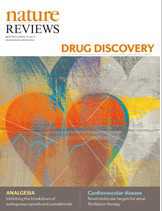JAD:研究证实阿尔茨海默氏症与糖尿病有关
2012-07-20 Beyond 生物谷
近日,(UMDNJ)新泽西医学和牙科大学与伊利诺伊州西北大学科学家合作发现糖尿病与阿尔茨海默氏病的发病有联系。这项研究发表在Journal of Alzheimer's Disease杂志上,该研究使用一种新实验模型研究阿尔茨海默氏病,科研人员正开发治疗阿尔茨海默氏症的药物。 博士研究人员Peter Frederikse和Chinnaswamy Kasinathan博士等人分析了是否未经治疗糖尿
近日,(UMDNJ)新泽西医学和牙科大学与伊利诺伊州西北大学科学家合作发现糖尿病与阿尔茨海默氏病的发病有联系。这项研究发表在Journal of Alzheimer's Disease杂志上,该研究使用一种新实验模型研究阿尔茨海默氏病,科研人员正开发治疗阿尔茨海默氏症的药物。
博士研究人员Peter Frederikse和Chinnaswamy Kasinathan博士等人分析了是否未经治疗糖尿病能否成为阿尔茨海默氏症的神经病理学生理模型。
Frederikse说结果是惊人的,因为我们将糖尿病的疾病当作始作俑者,我们的研究首次直接表明-阿尔茨海默氏症和糖尿病之间的联系。
研究人员发现,大脑皮质和海马中β淀粉样肽(阿尔茨海默氏病的一个标志物)大幅增加,与糖尿病并发有关。与此相反,他们还发现β淀粉样蛋白在视网膜病理疾病中,当糖尿病不存在时,研究并没有观察到β淀粉样蛋白存在大脑或视网膜中。
该实验模型复制在大脑和视网中自发形成β淀粉样蛋白“低聚物”,低聚物是导致阿尔茨海默氏病的记忆丧失的神经毒素。但如何导致迟发性阿尔茨海默氏病一直是个谜。
以往的研究表明胰岛素在记忆形成中起着重要的作用。一旦接触到神经元,低聚物导致胰岛素受体从神经元表面膜中被清除,导致大脑产生胰岛素抵抗。这将启动聚物积累,使得神经元产生更多的胰岛素抵抗,引发糖尿病恶性循环。
研究使我们能够识别阿尔茨海默氏病的潜在生物标志物,对阿尔茨海默氏症的药物测试和开发作出了重要贡献。
这项研究由国家卫生部、国家老龄化研究所、神经科学研究和教育基金会研究院支持。

doi:10.3233/JAD-2012-120571
PMC:
PMID:
Amyloid-β and Tau Pathology of Alzheimer's Disease Induced by Diabetes in an Animal Model
Claudine L. Bitel1, Chinnaswamy Kasinathan2, Rajesh H. Kaswala2, William L. Klein3, Peter H. Frederikse1
Alzheimer's disease (AD) is the major age-dependent disease of the brain, but what instigates late-onset AD is not yet clear. Epidemiological, animal model, and cell biology findings suggest links between AD and diabetes. Although AD pathology is accelerated by diabetes in mice engineered to accumulate human-sequence amyloid-β (Aβ) peptides, they do not adequately model non-inherited AD. We investigated AD-type pathology induced solely by diabetes in genetically unmodified rabbits which generate human-sequence Aβ peptides. After 15 weeks, alloxan-treated diabetic rabbits with expected high blood glucose showed ∼5-fold increase in Aβ40/Aβ42 in cortex and hippocampus, and significantly, generated Aβ-derived assemblies found in human AD. Deposits of these putative pathogenic toxins were detected by Aβ/Aβ oligomer antibodies in brain parenchyma and surrounding vasculature, also co-localizing with markedly elevated levels of RAGE. Soluble brain extracts showed diabetes-induced buildup of Aβ oligomers on dot-blots. Phospho-tau also was clearly elevated, overlapping with βIII-tubulin along neuronal tracts. Indications of retina involvement in AD led to examination of AD-type pathology in diabetic retinas and showed Aβ accumulation in ganglion and inner nuclear cell layers using Aβ/oligomer antibodies, and RAGE again was elevated. Our study identifies emergence of AD pathology in brain and retina as a major consequence of diabetes; implicating dysfunctional insulin signaling in late-onset AD, and a potential relationship between Aβ-derived neurotoxins and retinal degeneration in aging and diabetes, as well as AD. AD-type pathology demonstrated in genetically unmodified rabbits calls attention to the considerable potential of the model for investigations of AD pathogenesis, diagnostics, and therapeutics.
本网站所有内容来源注明为“梅斯医学”或“MedSci原创”的文字、图片和音视频资料,版权均属于梅斯医学所有。非经授权,任何媒体、网站或个人不得转载,授权转载时须注明来源为“梅斯医学”。其它来源的文章系转载文章,或“梅斯号”自媒体发布的文章,仅系出于传递更多信息之目的,本站仅负责审核内容合规,其内容不代表本站立场,本站不负责内容的准确性和版权。如果存在侵权、或不希望被转载的媒体或个人可与我们联系,我们将立即进行删除处理。
在此留言













#阿尔茨海#
63
#阿尔茨海默氏#
56
#阿尔茨#
47
#阿尔茨海默#
0